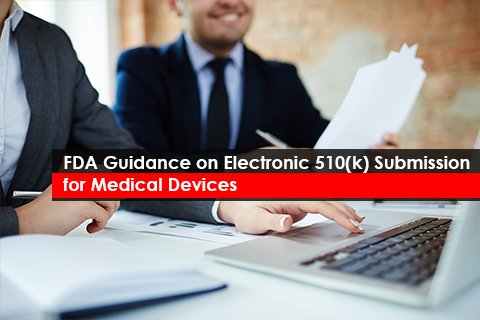A 510(k) submission for medical devices is a mandatory process to receive market clearance in the USA. While the submission process may not be onerous, figuring out where and how to begin can be daunting. However, the US FDA provides ample information in its guidance documents to assist the medical device manufacturers for a smooth 510(k) submission. Making maximum use of the information provided in the guidance is a key to a better understanding of device launches in the US market.
To describe the use of electronic submission templates for 510(k) submission and explain the Regulatory approach to developing electronic submission templates, the US FDA recently issued a guidance document.
The guidance represents one of the several steps in meeting the FDA’s commitment to develop electronic submission templates, which serve as guided submission preparation tools for the industry to enhance efficiency in the review process and improve submission consistency. This guidance will further implement the FDA’s mandate under section 745A(b) of the Federal Food, Drug, and Cosmetic Act (FD&C Act), amended by section 207 of the FDA Reauthorization Act of 2017 (FDARA), to provide further standards for submission in electronic format, a timetable for the establishment of these further standards and criteria for waivers and exemptions. Also, the FDA states that it will accept an electronic Submission Template and Resource (eSTAR) template for applications to the Center for Devices and Radiological Health (CDRH) and the Center for Biologics Evaluation and Research (CBER). The FDA states in the guidance that eSTAR is highly automated and includes:
- Integrated databases (e.g., FDA-recognized voluntary consensus standards, FDA product codes)
- Designed targeted questions to collect specific data and information from the submitter
- Applicable links to relevant guidance, regulations, and other resources for the submitter’s reference
According to the guidance, the main benefits of the eSTAR are:
- Automation (e.g., form construction, auto-filling)
- Automatic verification and free for use
- Structure and content that is complementary to CDRH internal review templates
- Guided construction for each submission section
- Integration of multiple resources (e.g., guidance documents, databases)
Finally, the FDA stated that it would specify a date for when they will require 510(k) electronic submissions. Therefore, to make the 510(k) electronic submissions process smoother and improve clearance timelines, the medical device manufacturers must consider all the above information as provided by the FDA. For a compliant submission process, reach out to a proven Regulatory expert. Contact Freyr now! Stay informed. Stay compliant.





